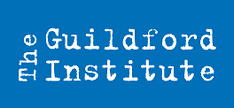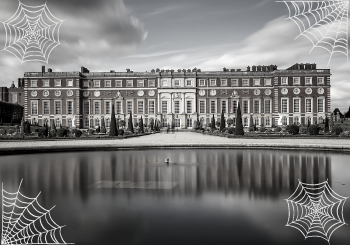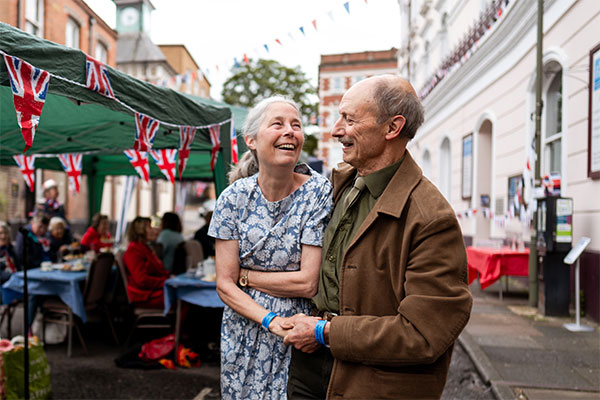Life in Lockdown: Past & Present
Margaret Westwood is a long-standing member of the Guildford Institute and has edited The Keep since 2005. Here, Margaret shares her thoughts on life in lockdown and considers the parallels between the plague of 1606 and the current Covid-19 pandemic.
Life in lockdown is beginning to get to me.
There’s a world going on out there – I can hear it – but I am not part of it. So when the neighbours’ children laugh and splash in their paddling pool, or declare the day is perfect for a BBQ (which it is), I feel both distanced and isolated from reality. Without the social events that mark the progress of the year, life is like an unpunctuated sentence – shapeless and confusing. This may have seemed a brilliant literary innovation to James Joyce but not to me. It suggests the virus is in control.
The “guidance” from our leaders is not reassuring. To stay safe we must stay home. Some are allowed social distance; others (like me) are discouraged from even venturing outside the front door. The message is one of fear, of the unseen and unknowable – an invisible Covid-19. But we will survive just as our ancestors survived plagues and pandemics. We are resilient.
* * * * *
On 05 January 1606, the elite of London made their way to the Banqueting Hall of Whitehall Palace to enjoy a court masque. King James loved spectacular theatre; he ordered 18 plays to be staged over the Christmas holidays, ten of them by one William Shakespeare and his company The King‘s Men. It was planned as a splendid start to a thrilling theatrical season. But six months later all the playhouses were closed: the plague had returned to London.
Its sudden resurgence caught everyone off guard. A weekly list of plague deaths listed by parish was published every Thursday – and showed an inexorable rise in the numbers who had succumbed. Two years earlier the Privy Council ordered that all public playhouses should close if the weekly plague deaths exceeded 30 and only reopen once the number had dipped below (this was King James’s R factor). By mid-July the death toll was increasing week by week, creating heightened anxiety and fear across all parishes. Tough measures were introduced to try and stop the spread of the disease – and equally tough sanctions were applied. Infected houses were marked with a red cross and the occupants quarantined indefinitely.
Anyone who escaped from a quarantined house with visible plague sores was guilty of a felony and subject to execution, but those who had survived (and were thus immune) were allowed out as searchers to forage for food. They were required to carry a 3ft long rod or wand so other people could give them a wide berth. This proved effective social distancing.
To limit social contact, funerals were restricted to six mourners including the minister; it was forbidden to move bedding from one house to another and for servants “to go abroad”. Transgressors of the lockdown were very severely treated: one family, accused of having let a servant girl visit her parents, were barricaded in their own home by angry neighbours saying it was better “that they should all starve” for breaking the rules. It seems the pestilence did more than carry off good people, men and true (especially children); it created a sense of distrust and enmity amongst former neighbourly citizens.
Early in October the outbreak took on a new life. In a second wave, plague deaths soared to over 141 per week. The Lord Mayor claimed people were washing off the red crosses on their doors, so decreed that an oil-based paint should be used. He also proposed expelling all the beggars from the City and posting watchmen outside every infected house. But it was clear that with over 1000 Londoners infected, these were empty promises. There were neither resources nor manpower enough to note the spread. The only other possible move was total isolation of the City. This was not on. King James had enjoyed his summer holiday but now insisted that Parliament should re-convene – to resolve the unfinished business of the Union of Scotland and England.
Suddenly, in a chilly November, the number of deaths plummeted. By the end of the month the weekly report was well below the official under 30 rule, so public theatres could re-open. Theoretically. But such was the impact of the plague on the people of London, struggling to recover their health, mourn their losses and re-start their lives, that most public places of entertainment remained closed for nearly two years.
The parallels are obvious. Yet life went on. King Lear was performed at court in December 1606, but while The Globe was dark (apart from a brief period in 1607) three great Shakespeare tragedies – King Lear, Macbeth and Antony and Cleopatra – were written (in that order) under lockdown. I cannot aspire to writing a play, but I might have go at a sonnet!
If you’re missing arts and cultural events during your life in lockdown, don’t forget to have a read of our Culture in Quarantine post and discover how organisations are now connecting with their audience online. There are also plenty of opportunities to perfect a skill or learn a new hobby with the Institute’s online programme of courses and workshops.





